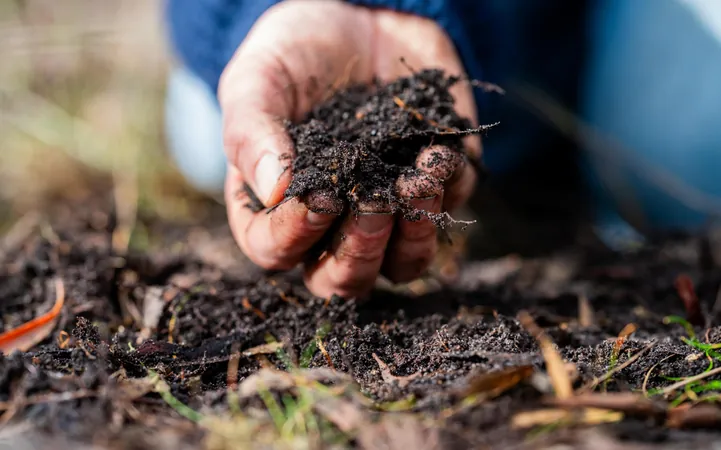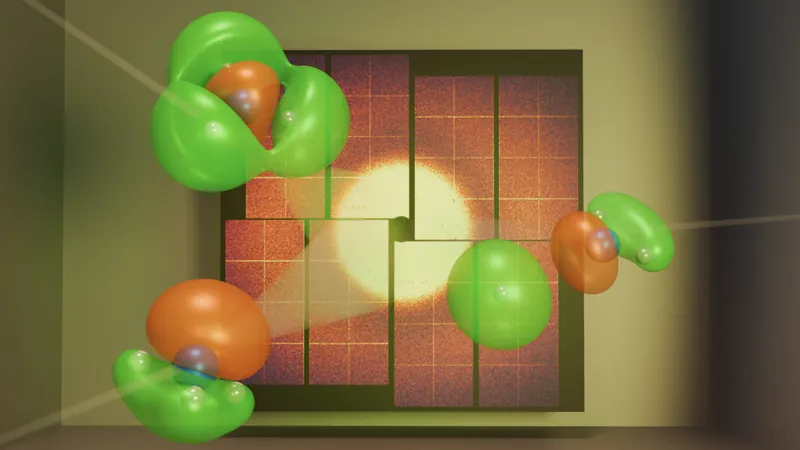
Unlocking the Secrets of Soil: How Organic Matter Could Preserve Water like on Mars!
2025-08-12
Author: John Tan
Revolutionary Discovery in Soil Science
A groundbreaking study has revealed an ingenious way that organic matter enables soil to retain water, even under the most arid conditions. Researchers have unearthed how certain plant and microbial carbohydrates form microscopic 'bridges' with soil minerals, capturing water that would typically vanish into the atmosphere.
The Magic of Compost and Plant Matter
This research sheds light on why adding compost or plant material enhances soil's moisture retention capabilities. Imagine designing soils that function as long-lasting sponges—this study paves the way.
Lead researcher Ludmilla Aristilde from Northwestern University stated, "When balanced correctly, minerals and organic matter result in healthy soils that keep moisture in. Although many have experienced this, the precise science behind it hasn’t been fully grasped—until now! By understanding these interactions, we could potentially engineer soil that preserves moisture effectively."
Peeking into Soil's Nanoscale
Aristilde and her team focused on smectite, a prevalent clay mineral. They blended it with three types of carbohydrates: glucose, amylose, and amylopectin. While glucose is a simple sugar, amylose and amylopectin split into more complex structures.
Aristilde explained, "We chose carbohydrates due to their ubiquity. Cellulose, the Earth’s most abundant biopolymer, is composed of glucose, and various plants and microbes naturally secrete different carbohydrates into the soil. Their simple chemistry allowed us to avoid complications in our results."
Water's Dual Bonding Power
Through an incredible combination of molecular simulations and lab tests, the researchers explored the interaction of clay, water, and carbohydrates at the nanoscale. They discovered a fascinating phenomenon: water molecules form hydrogen bonds not just with each other, but also with both clay surfaces and carbohydrates.
These dual bonds create resilient water 'bridges' that cling tightly within the soil matrix. Aristilde elaborates, "Water molecules bound simultaneously to both a carbohydrate and the mineral surface have a stronger binding energy, making them incredibly stable."
Soil that Stays Strong in Drought
Their simulations showcased that water trapped between clay and carbohydrates was significantly more robust than water clinging to clay alone. In fact, complex sugar polymers enhanced water-binding strength by up to five times! The use of carbohydrates effectively enables soil to retain moisture even in extreme dry conditions.
By increasing temperatures during their experiments, they observed that the presence of carbohydrates along with clay required much higher temperatures for moisture loss. These carbohydrates also prevented clay pores from collapsing completely during dry spells, preserving precious moisture.
Earthly and Cosmic Implications
The implications of this study could transform the way farmers, gardeners, and environmental engineers approach soil health. By adjusting the balance of minerals and organic matter, it might be possible to cultivate soils that retain moisture longer, subsequently reducing irrigation needs and helping crops thrive in arid regions.
The research’s ramifications even extend into planetary science, providing potential explanations for how ancient Martian soils or meteorites retained moisture for billions of years.
Aristilde commented, "While we aimed to decode the moisture retention of soil on Earth, the implications of our findings could also shed light on phenomena beyond our planet, particularly concerning bodies that are thought to have once supported life."
Conclusion: A Future of Possibilities
By unveiling the molecular 'glue' that binds water to soil, this research unlocks new possibilities for sustaining life even in the harshest environments, both on Earth and throughout our solar system. The full study can be found in the journal *PNAS Nexus*.





 Brasil (PT)
Brasil (PT)
 Canada (EN)
Canada (EN)
 Chile (ES)
Chile (ES)
 Česko (CS)
Česko (CS)
 대한민국 (KO)
대한민국 (KO)
 España (ES)
España (ES)
 France (FR)
France (FR)
 Hong Kong (EN)
Hong Kong (EN)
 Italia (IT)
Italia (IT)
 日本 (JA)
日本 (JA)
 Magyarország (HU)
Magyarország (HU)
 Norge (NO)
Norge (NO)
 Polska (PL)
Polska (PL)
 Schweiz (DE)
Schweiz (DE)
 Singapore (EN)
Singapore (EN)
 Sverige (SV)
Sverige (SV)
 Suomi (FI)
Suomi (FI)
 Türkiye (TR)
Türkiye (TR)
 الإمارات العربية المتحدة (AR)
الإمارات العربية المتحدة (AR)